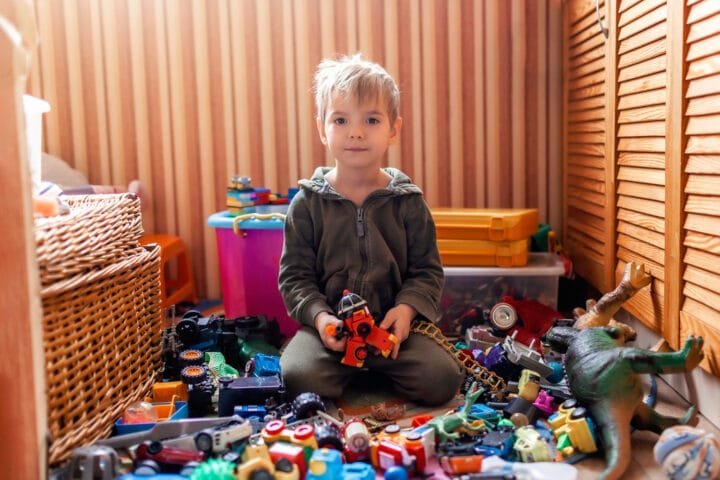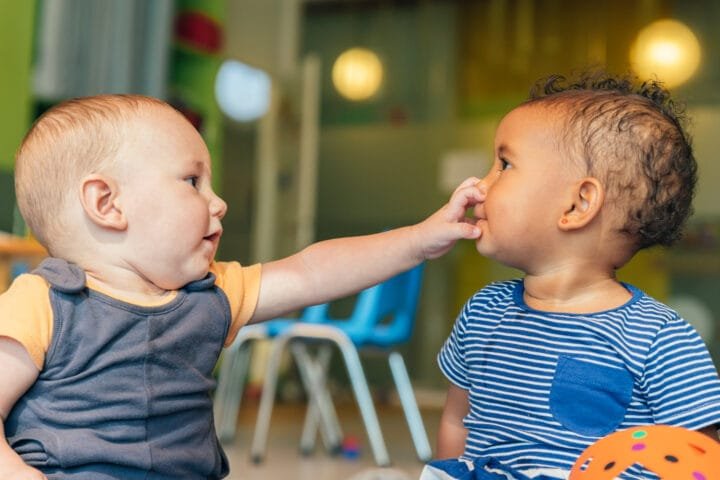The Classroom Crossroads: Is Homeschooling Right for Your Child?
Do you remember when Susie threw a tantrum in the grocery store when you refused to buy her that candy bar with the questionable cartoon character? It was a blast. If that huff happened every morning when you tried to get her ready for school, you could imagine her coming home complaining about a kid named Kevin putting worms in her lunch box. Homeschooling suddenly looks appealing.
Hold on! Let’s discuss homeschooling versus traditional schooling before making any decisions. By understanding the good, the cryptic, and the messy realities, you can make an informed choice that empowers you and benefits your child. These ‘messy realities’ include the potential for burnout and isolation in homeschooling and the challenges of navigating peer pressure and bullying in traditional schooling.
Academic Advantages and Disadvantages: A Tale of Two Classrooms
Education is like picking between apples and oranges. They’re both fruit (or, in this case, education!) and offer benefits, but they’re different.
- Homeschooling
- Traditional Schooling
Homeschooling: The One-Room Schoolhouse Reinvented
1. Personalized Learning: Remember when your little one was obsessed with dinosaurs? They could rattle off every species, from the mighty T-Rex to the tiny Microraptor. Homeschooling lets you tap into those passions and tailor lessons to their learning style. Is your child a visual learner? Bring on colourful charts, documentaries, and hands-on projects. Do they thrive on movement and interaction? Let’s get those wiggles out with field trips, experiments, and games that make learning come alive.
2. Flexible Pacing: One of the greatest gifts of homeschooling is the freedom to ditch rigid schedules and standardized timelines. If your child struggles with a concept, you can slow down, provide extra support, and revisit it differently until that light bulb moment clicks on. Conversely, if they zoom ahead, you can dive deeper into subjects that excite them and let their curiosity lead the way.
3. Curriculum Control: Want to weave your family’s values and beliefs into your child’s education? Homeschooling allows you to choose curriculum materials that align with your worldview. You can even incorporate subjects traditional schools might not offer, like entrepreneurship, coding, or a deep dive into ancient Egyptian history (because who doesn’t love mummies?).
4. Focused Attention: Let’s be honest; even the most dedicated teachers in traditional schools have their hands full managing a classroom full of students. With homeschooling, your child gets your undivided attention. This means more opportunities for individualized instruction, immediate feedback, and a deeper connection to the learning material. It’s like having a personal tutor who knows how your child learns best.
5. Academic Freedom: Homeschooling opens the doors to learning beyond textbooks and standardized tests. Want to spend a week building a backyard observatory to learn about astronomy? Go for it! This freedom encourages curiosity, creativity, and a lifelong love of education. It’s about sparking wonder and excitement in you and your child.
B. Traditional Schooling: The Tried and True Path
1. Structured Environment: School days are a source of comfort for some kids. Knowing what to expect, when to expect it, and having clear boundaries can create security and stability. Traditional schools provide that structure, helping children develop organizational skills, time management, and a sense of responsibility. Plus, knowing that a team of adults cares for your child’s well-being is reassuring.
2. Diverse Curriculum: Traditional schools offer an array of subjects to explore, from science mysteries to music magic. This exposure to different disciplines can help children discover hidden talents and passions they never knew they had. And let’s remember extracurricular activities! Sports teams, drama clubs, and student government – these experiences teach teamwork and leadership and build friendships that last a lifetime.
3. Access to Resources: Think of science labs with bubbling beakers, libraries overflowing with books, and art studios bursting with colour. Traditional schools often have resources that are difficult to replicate at home. These resources can bring learning to life, offering hands-on experiences and sparking exploration.
4. Qualified teachers: Teachers are unsung heroes of our society. They bring years of training, expertise, and a genuine passion for education to the classroom. They understand how children learn, how to differentiate instruction to meet diverse needs, and how to inspire a love of learning.
5. Standardized Assessments: Okay, let’s talk about the elephant in the room: standardized tests. While they can be stressful (for both kids and parents!), these assessments serve a purpose. They provide a benchmark for measuring progress, identifying areas where your child might need extra support, and ensuring they meet academic standards.
Brain Game and STEM Toy for Boys and Girls Age 8 and Up: Toy of the Year Award Winner
Educational Toys and Gift for 2 - 6 Years Old Boys and Girls - 80Pcs of CVC Word Builders, Alphabet Colors Recognition Game, Preschool Learning Activities Toys
Science Kit for 4-8 Year Old Boys & Girls| Toy Stem Kit with 100+ Experiments| Learning & Educational, Preschool Activities
Microscope for Kids, STEM & Science Toy, Interactive Learning, Ages 3+
60+ Science Experiment Kit
Educational Toys for Kids Ages 3-8,Learing Games for Kids 3-8, Matching Letter Spelling Game
My First Learn to Write Workbook: Practice for Kids with Pen Control, Line Tracing, Letters, and More!
NATIONAL GEOGRAPHIC Microscope for Kids - Science Kit with an Easy-to-Use Kids Microscope, Up to 400x Zoom, Blank and Prepared Slides, Rock & Mineral Specimens, STEM Project Toy
520 Sight Words Flash Cards for Preschool (Pre K) Kindergarten 1st 2nd 3rd Grade Homeschool (Kids Ages 3, 4, 5, 6, 7, 8, 9) Set
Socialization and Development: The Longest Debate
Homeschooling concerns socialization. Will homeschooled children become socially awkward hermits who only communicate with goldfish? There are myths to be debunked, and traditional schooling and homeschooling have a diverse social landscape.
- Homeschooling
- Traditional Schooling
Homeschooling: Beyond stereotypes
1. Family-Centered Learning: Homeschooling offers an excellent opportunity for family bonds to be ongoing. Learning becomes a shared experience between parents and children, where they can build a birdhouse to explore geometry or bake a cake to learn fractions. Sharing experiences creates lasting memories and fosters strong bonds.
2. Community Involvement: Isolating your child from the world is unnecessary when homeschooling. The co-op, support group, and various community activities allow children to interact with peers, gain knowledge from different adults, and develop social skills in diverse settings.
3. Diverse Interactions: Homeschooling allows students to interact with people from varied backgrounds and ages, leading to a broader understanding of the world and an enhanced appreciation of diversity than traditional schools.
4. Reduced peer pressure: Traditional schools can have intense social pressure. Cliques, bullying, and needing to fit in can hurt self-esteem. Children can escape these pressures through homeschooling and develop a strong sense of self without constant peer judgment.
5. Real-World Experiences: Homeschooling allows you to integrate learning with real-life experiences. For example, you can take grocery shopping to learn about budgeting. You can also volunteer at a local animal shelter to learn about compassion or visit museums to discover history.
Traditional Schooling: The Social Butterfly’s Haven
1. Peer Interaction: Children learn to navigate peer relationships in traditional schools. They develop social skills and learn to cooperate, negotiate, and resolve conflicts – critical life skills.
2. Teamwork and Collaboration: Traditional schools provide ample opportunities for children to learn teamwork and collaboration, from group projects to team sports. These experiences teach them to share ideas, listen to others, and work towards a common goal.
3. Developing Independence: Managing assignments, adhering to deadlines, and managing the school day help children become independent and self-sufficient, learn responsibility and become more independent learners.
4. Exposure to Diversity: As traditional schools reflect society, they bring together children from diverse backgrounds, cultures, and socioeconomic groups to learn about each other, respect, and empathize.
5. Extracurricular Activities: Traditional schools offer various extracurricular activities. By participating in these activities, children can explore their interests, develop their talents, and form friendships outside the classroom. This can boost their self-esteem, develop leadership skills, and make them feel like they belong, enhancing their social development and giving them confidence in their school experience.
Financial and Logistical Considerations: Counting the Costs (and the Hours!)
Let’s be honest: choosing an educational path isn’t just about academics. It’s also about figuring out how it fits into your life, budget, and living room (because, let’s face it, sometimes the kitchen table becomes a classroom!).
- Homeschooling
- Traditional Schooling
Homeschooling: Investing Time and Resources
1. Cost: Okay, let’s address the elephant in the room. Homeschooling isn’t free. You must invest in curriculum materials, books, art supplies, and online resources or tutoring help. The cost can range from a few hundred bucks to a few thousand, depending on your approach and how fancy you want to get. But here’s the good news: tons of free and low-cost resources are out there, and you can often find used curriculum materials online or at homeschooling conferences. It’s like a treasure hunt for educational gold!
2. Time Commitment: Homeschooling, especially in those early years, is a time commitment, no doubt. You’re the teacher, the principal, the lunch lady, and the janitor all rolled into one. It can be a juggling act, especially if you’re busy or have other little ones running around. But here’s the thing: homeschooling also offers incredible flexibility. You can create a schedule that works for your family, squeezing lessons between soccer practice and grocery runs. It’s all about finding your rhythm.
3. Space Requirements: You don’t need a dedicated schoolroom to homeschool. A spare bedroom, a corner of the living room, or even the kitchen table can become your learning hub. The key is to create a space conducive to learning, with minimal distractions (bye-bye TV!) and plenty of natural light. Get creative! Turn your backyard into a science lab, your living room into an art studio, and the world into your classroom.
4. Parental Qualifications: You don’t need to be a certified teacher to homeschool, but you do need a willingness to learn and adapt alongside your child. You’ll guide them through various subjects, so be prepared to brush up on your knowledge or seek support when necessary. Think of it as a lifelong learning adventure for both of you!
5. Long-Term Planning: If your child dreams of college, you’ll want to ensure they meet the requirements. This might involve standardized tests, portfolios of their work, or other documentation. It’s all about watching the prize and ensuring they have the tools to succeed.
6. Burnout Prevention: Let’s be honest, homeschooling can be intense. It’s like running a marathon, not a sprint. So, it’s crucial to build in breaks, prioritize self-care (yes, that means taking a bubble bath and reading a book!), and connect with other homeschooling families for support and encouragement. Remember, you can’t pour from an empty cup!
Traditional Schooling: Navigating the System
1. Tuition Fees: Public schools are generally free, which is a huge plus. But if you’re considering private school, be prepared for tuition bills. They can be hefty, and you’ll also need to factor in extras like uniforms, school supplies, and those after-school activities that seem to multiply like rabbits.
2. Transportation: Getting your child to and from school can be a logistical puzzle, especially if you live far away or have multiple kids attending different schools. Factors in transportation costs include bus fare, gas money, or time commitment. And let’s remember those frantic mornings trying to find the missing shoe!
3. School Supplies: Every year, it’s the same thing: back-to-school shopping. The list gets longer, from pencils and notebooks to calculators and art supplies. It can hurt your wallet.
4. School Schedules: Traditional schools operate on a fixed schedule, which can challenge families with busy or unpredictable lifestyles. You’ll need to be organized and ensure your child gets to school on time every day. Say goodbye to those spontaneous mid-week trips to the zoo!
5. Potential for Bullying: Sadly, bullying is a reality in many schools. It’s heartbreaking to think about your child facing those challenges. It’s necessary to teach your child how to respond if they experience or witness bullying and communicate with the school to address concerns openly.
Legal and Regulatory Frameworks: The Not-So-Scary Part
Okay, I know what you’re thinking. “Legal frameworks?” Sounds intimidating, right? But don’t worry, it’s simpler than it sounds. Think of it as the “official stuff” we need to know to ensure we’re doing things right.
- Homeschooling
- Traditional Schooling
Homeschooling: Playing by the Rules
1. Varying Regulations: Like fashion trends, homeschooling laws vary from state to state. Some states are relaxed, while others have more rules to follow. Think of it as knowing the local dress code before attending a party. You wouldn’t want to show up in a ball gown when everyone else wore jeans, right? Research your state’s homeschooling laws, including notification procedures, record-keeping, and testing requirements. The Home School Legal Defense Association (HSLDA) is an excellent resource to help you navigate these legal waters.
2. Record-Keeping: Think of yourself as the school secretary, keeping track of all the significant stuff. You must maintain accurate records of your child’s attendance, curriculum, and assessments. It might sound like a chore, but it’s pretty simple, and it’s essential to show that you’re meeting your state’s requirements. Plus, having these records for college applications or future employment is helpful.
3. Standardized Testing: Many states require homeschoolers to take standardized tests at specific grade levels. Consider it an occasional check-up to ensure your child is on track academically. It can also be a helpful tool for identifying areas where they might need extra support.
4. Legal Support: Organizations like the HSLDA are like homeschooling superheroes. They offer legal support and resources to homeschooling families, helping you navigate the legal maze and advocating for your rights. It’s always helpful to know you have backup!
5. Curriculum Approval: Some states want to ensure you’re using a curriculum that meets their standards. Think of it as choosing the right ingredients for a recipe. You want to make sure you have everything you need to create a delicious and nutritious meal (or, in this case, a well-rounded education). So, check your state’s requirements and choose curriculum materials that fit the bill.
Traditional Schooling: Understanding the System
1. Compulsory Education Laws: Every state requires children to attend school for a certain number of years or until they reach a specific age. Think of it as ensuring everyone gets the essential knowledge and skills they need to succeed.
2. School Choice Options: You have more options than your local public school. Think of charter, magnet, and private schools – it’s like choosing the right pair of shoes. You want to find one that fits your child’s needs and learning style perfectly. Each type of school has its unique flavour, so do your research and find the one that feels right.
3. Special Education Services: Public schools must provide special education services for students with disabilities. These services are designed to help every child reach their full potential, no matter their challenges.
4. School Accountability: Just as we check our kids’ report cards, knowing how schools perform is essential. School accountability reports give you the inside scoop on things like test scores, graduation rates, and other factors that can help you evaluate the quality of education your child receives.
5. Parent-Teacher Communication: Open communication between parents and teachers is essential for student success. Think of it as a partnership. By attending parent-teacher conferences, staying in touch with your child’s teacher, and getting involved in school activities, you can actively participate in your child’s education and help them thrive.
Long-Term Outcomes and Success: Beyond the Classroom Walls
At the end of the day, whether you choose homeschooling or traditional schooling, we all want the same thing. To raise kind, capable, and successful kids ready to take on the world.
- Homeschooling
- Traditional Schooling
Homeschooling: Thriving in the Real World
1. College Success: Do homeschoolers need college opportunities? Think again! Homeschool graduates are not only accepted into colleges and universities, but they thrive there. Studies show that they tend to have higher GPAs, graduate at higher rates, and are more likely to take on leadership roles. Independent learning skills and self-motivation pay off!
2. Social Adjustment: Are you worried your homeschooled child might become a social recluse? Don’t be worried! Homeschoolers are just as socially adept as their traditionally educated peers. They build strong communication skills through interactions with family, friends, and community members and participating in various activities, from sports teams to debate clubs.
3. Career Paths: Homeschooling can open up career possibilities. Homeschoolers tend to be independent, self-directed learners with a strong work ethic–qualities employers love. They might pursue traditional careers, start businesses, or even blaze their trail. The sky’s the limit!
4. Life Skills: Let’s face it, knowing how to solve for “x” is essential, but so is learning how to cook a decent meal, balance a budget, and do your laundry (without turning everything pink!). Homeschooling provides opportunities to integrate essential life skills into everyday learning, setting kids up for success in the real world.
5. Personal Values: As parents, we want to instil our values in our children and help them develop a solid moral compass. Homeschooling allows you to weave those values into every aspect of their education, creating a foundation to guide them throughout their lives.
Traditional Schooling: Preparing for the Future
1. Academic Preparation: Traditional schools provide a structured curriculum to prepare students for college and careers. They offer various subjects, standardized testing to measure progress, and college counselling to help students navigate the application process.
2. Social and Emotional Development: Traditional schools are a microcosm of society, from playground politics to classroom collaborations. These experiences help children develop essential social and emotional skills, like navigating relationships, managing emotions, and building resilience.
3. Civic Engagement: Traditional schools often emphasize civic responsibility and encourage students to get involved in their communities. They might offer opportunities for volunteering, student government, and debates on current events. This might foster a sense of citizenship and a desire to make a difference.
4. Career Readiness: Many traditional schools offer career counselling, vocational training, and internships to help students explore different career options and develop job-ready skills. They provide a bridge between the classroom and the working world.
5. Lifelong Learning: Traditional schools aim to instil a love of learning beyond the classroom walls. They provide a foundation for lifelong learning, encouraging students to become informed, engaged citizens who are always eager to learn and grow.
Brain Game and STEM Toy for Boys and Girls Age 8 and Up: Toy of the Year Award Winner
Educational Toys and Gift for 2 - 6 Years Old Boys and Girls - 80Pcs of CVC Word Builders, Alphabet Colors Recognition Game, Preschool Learning Activities Toys
Science Kit for 4-8 Year Old Boys & Girls| Toy Stem Kit with 100+ Experiments| Learning & Educational, Preschool Activities
Microscope for Kids, STEM & Science Toy, Interactive Learning, Ages 3+
60+ Science Experiment Kit
Educational Toys for Kids Ages 3-8,Learing Games for Kids 3-8, Matching Letter Spelling Game
My First Learn to Write Workbook: Practice for Kids with Pen Control, Line Tracing, Letters, and More!
NATIONAL GEOGRAPHIC Microscope for Kids - Science Kit with an Easy-to-Use Kids Microscope, Up to 400x Zoom, Blank and Prepared Slides, Rock & Mineral Specimens, STEM Project Toy
520 Sight Words Flash Cards for Preschool (Pre K) Kindergarten 1st 2nd 3rd Grade Homeschool (Kids Ages 3, 4, 5, 6, 7, 8, 9) Set
Conclusion: Choosing the Right Path for Your Family
Traditional schooling and homeschooling are deeply personal. There is no one-size-fits-all answer. It is essential to carefully weigh the pros and cons, consider your child’s needs, and trust your instincts when choosing an educational path. This will help them succeed.
FAQs
You bet it is! Homeschooling is legal in all 50 states, though the specific rules and regulations differ depending on where you live. It’s always a wise idea to check out your state’s specific homeschooling laws to ensure you’re dotting all the i’s and crossing all the t’s.
That’s a common misconception, but it’s a myth! Homeschoolers are just as social as their traditionally educated peers. They have plenty of opportunities to interact with other kids through homeschool co-ops, community activities, sports teams, and even hanging out with neighborhood friends. Homeschoolers might have more diverse social interactions because they’re not limited to kids their age.
Absolutely! Colleges and universities recognize the value of a homeschool education. Homeschoolers often have strong academic records, demonstrate independent learning skills, and bring their own perspective to the classroom. They might need extra documentation, like portfolios of their work or standardized test scores. However, they definitely have a pathway to higher education.
Well, let’s say it’s not all sunshine and rainbows. Homeschooling can be incredibly rewarding, but it’s also a big commitment. Some of the biggest challenges include:
Time management: Juggling teaching, household chores, and even a job can be a balancing act.
Burnout: It’s easy to get overwhelmed and exhausted when wearing all the hats.
Staying organized: Keeping track of curriculum, lesson plans, and records requires severe organizational skills.
Social pressure: You might face criticism or judgment from family or friends who don’t understand homeschooling.
Parenting has its challenges. The key is to be prepared, build a support network, and remember why you chose this path in the first place.
Ah, the million-dollar question! There’s no easy answer, but here are some things to consider:
Your child’s learning style: Do they thrive in a structured environment or need more flexibility?
Your child’s personality: Are they independent and self-motivated, or do they need more external motivation?
Your family’s values: Do you want more control over your child’s education and values?
Your lifestyle: Does your family have the flexibility to accommodate homeschooling?
Related Posts
























































































